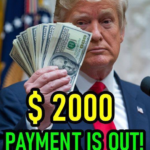As Los Angeles continues to reel from violent anti-ICE protests that erupted over the weekend, new details are emerging about the groups behind the unrest, the funding behind their efforts, and the political figures stepping into the fray — sometimes quite literally.
Among the most alarming revelations: a nonprofit group with deep political ties and millions in taxpayer funding has been identified as a major player in the demonstrations that left ICE agents injured, federal property damaged, and downtown streets in chaos.
And as the violence escalated, Congresswoman Maxine Waters made a dramatic appearance on the scene, confronting National Guard troops deployed by President Trump and demanding to know why they were “armed in her city.”
Who’s Behind the Protests? All Eyes on CHIRLA
According to attorney and activist Laura Powell, one of the primary organizations fueling the recent unrest is the Coalition for Humane Immigrant Rights (CHIRLA) — a Los Angeles-based nonprofit with a long history of progressive immigration advocacy and direct-action organizing.
In a post shared on the social platform X, Powell attached a screenshot showing CHIRLA’s role in organizing opposition to recent ICE enforcement actions. She didn’t mince words:
“If you are a Californian, the current LA riots are an example of your tax dollars hard at work,” she wrote.
“CHIRLA is one of the key players in fomenting the violent response to immigration enforcement actions.”
Powell, known for her watchdog work tracking public money and its ties to political activism, called attention to the group’s radical history — including a 2018 campaign to abolish ICE entirely.
“It currently leads the Los Angeles Rapid Response Network, which gathers intel about enforcement actions and deploys activists to respond,” Powell continued.
If you are a Californian, the current LA riots are an example of your tax dollars hard at work.
The Coalition for Humane Immigrant Right—CHIRLA—is one of the key players in fomenting the violent response to immigration enforcement actions. It’s an LA-based nonprofit with a… pic.twitter.com/PSzSsdu0hg
— Laura Powell (@LauraPowellEsq) June 9, 2025
Deep Political Ties and Millions in State Funding
Perhaps the most striking detail in Powell’s exposé was the sheer amount of public funding CHIRLA has received.
“CHIRLA’s activities are primarily funded by California taxpayers,” Powell revealed. “For the fiscal year ending June 2023, it received $34 million from the state, mostly through the Department of Social Services.”
That figure represented 72% of the organization’s total revenue, and a nearly threefold increase over the previous year, she added.
CHIRLA has also been tied closely to Democratic power structures in California, particularly Los Angeles Mayor Karen Bass, who has openly supported the group’s mission and partnerships.
“The organization has a particularly close relationship with organized labor in the state, which in turn is a major financial supporter of Democrat politicians,” Powell wrote.
She also noted that CHIRLA had received a $450,000 federal contract in 2023, a grant that Mayor Bass publicly took credit for helping secure. However, the funding was later frozen by the Department of Homeland Security (DHS), leading CHIRLA to file — and eventually drop — a lawsuit.
“Eisenhower warned of the military-industrial complex — now we face a nonprofit-industrial complex,” Powell concluded.
Violence and Chaos in LA Streets
The protests, originally sparked by recent ICE workplace raids, quickly escalated into violent confrontations between demonstrators and federal agents. Federal vehicles were set on fire, ICE agents were injured, and downtown businesses were vandalized or looted.
As the situation grew increasingly dangerous, President Trump authorized the deployment of 2,000 California National Guard troops, while Defense Secretary Pete Hegseth placed an additional 500 Marines on standby at Camp Pendleton.
The order was part of Trump’s broader executive directive titled “Department of Defense Security for the Protection of Department of Homeland Security Functions,” which expands the military’s role in protecting ICE and federal immigration operations.
Maxine Waters Confronts National Guard in Fiery Exchange
Amid the escalating tensions, one figure made headlines not for calming the situation, but for confronting the federal response head-on.
California Rep. Maxine Waters, long known for her fiery rhetoric and progressive stance on immigration, appeared on the streets of Los Angeles alongside demonstrators.
In a moment captured on video, Waters yelled at National Guard troops standing near the Los Angeles Federal Building:
“Why do you have guns? What are you going to do — shoot some kid who’s afraid of you and runs?”
“You going to shoot an elected official? If you shoot me, you better shoot straight.”
Waters criticized the federal presence as an intimidation tactic orchestrated by Trump, claiming the state’s leadership had been bypassed.
“I don’t know why you’re in my city. The governor was not contacted. This is Trump — and his outrageous attempt to not only target our sanctuary city but to frighten us and intimidate us.”
She finished with a warning to troops:
“I hope that none of you will use those guns to shoot anybody. There’s no reason to shoot anybody.”
Waters Tries to Access Federal Building, Demands to “Check On” Jailed Union Leader
Following her exchange with the National Guard, Waters attempted to enter the Los Angeles Federal Building, reportedly to “check on” SEIU President David Huerta.
Huerta had been injured and detained during violent clashes between demonstrators and ICE agents the previous night. His arrest for obstruction during the protests triggered widespread anger among organized labor groups.
Waters, a longtime ally of California’s labor movement, demanded to see Huerta and reportedly called for his release — adding fuel to an already explosive situation.
A Deeper Crisis: Public Money, Political Power, and Civil Unrest
What’s unfolding in Los Angeles is about more than just a weekend of protests. It’s a window into a growing ecosystem of publicly funded activism, deeply connected to California’s political leadership — and increasingly willing to confront federal authority.
The revelations about CHIRLA raise uncomfortable questions:
-
- Should California taxpayer dollars fund groups that actively oppose federal law enforcement?
- Is it appropriate for elected officials like Mayor Bass to secure federal contracts for groups involved in politically charged street actions?
- What role should elected officials play when activism turns to aggression?
For critics, the message is clear: the lines between political activism, taxpayer funding, and street-level unrest are blurring — and that could have long-term consequences for governance, law enforcement, and public trust.
California’s Immigration War Reaches a Boiling Point
Between ICE crackdowns, violent protests, military deployment, and elected officials taking to the streets, California has become the central front in America’s ongoing battle over immigration policy.
On one side are federal agencies trying to enforce national immigration laws. On the other are deeply entrenched activist networks, many of them supported by taxpayer money and connected to powerful political players.
When even members of Congress are openly confronting soldiers and demanding access to detainees, it’s clear that this conflict isn’t slowing down — it’s only accelerating.
And in the days ahead, with more protests planned, Los Angeles remains a city on edge — a place where the fight over immigration, law enforcement, and political power is being waged in real time.





